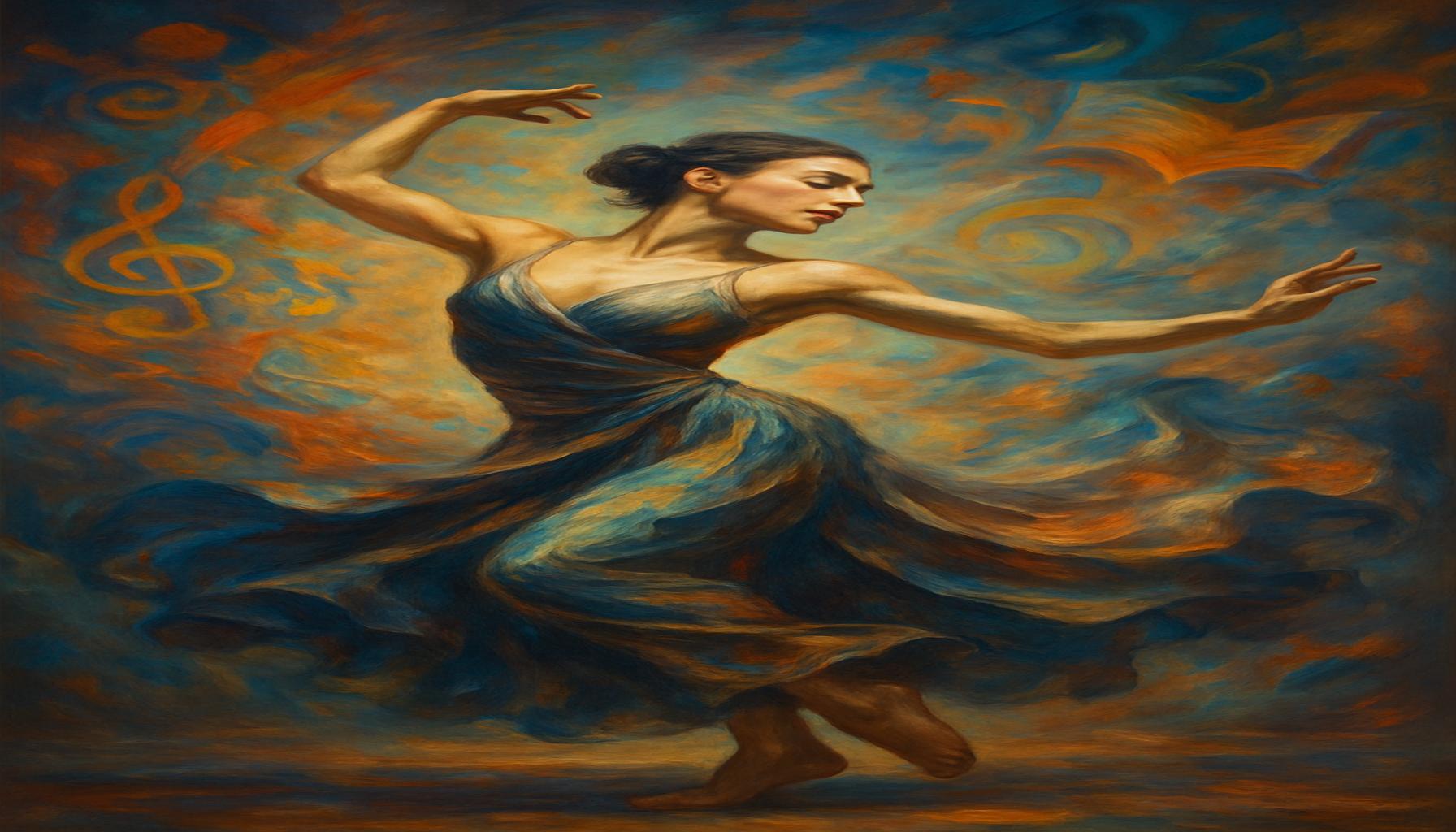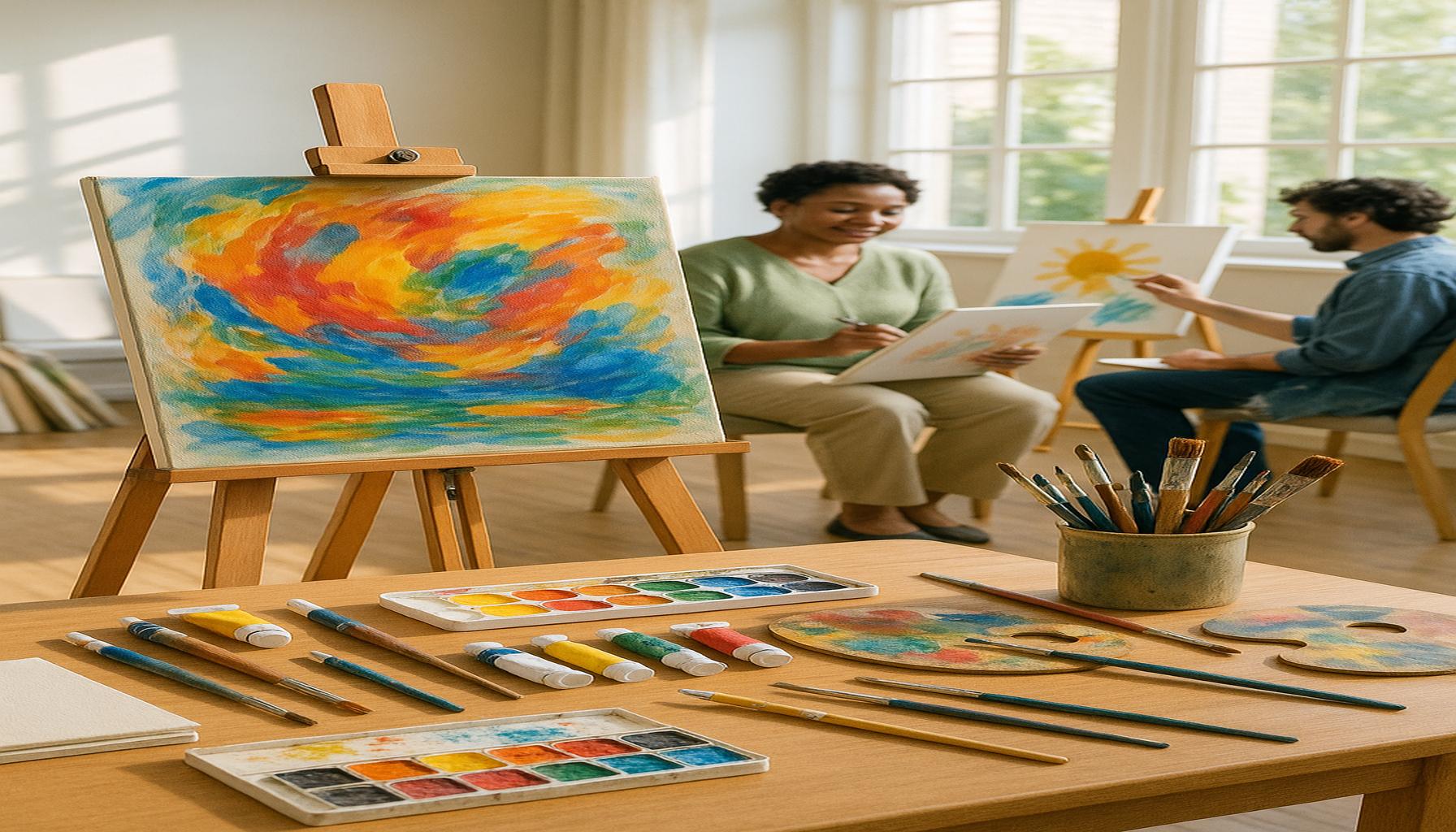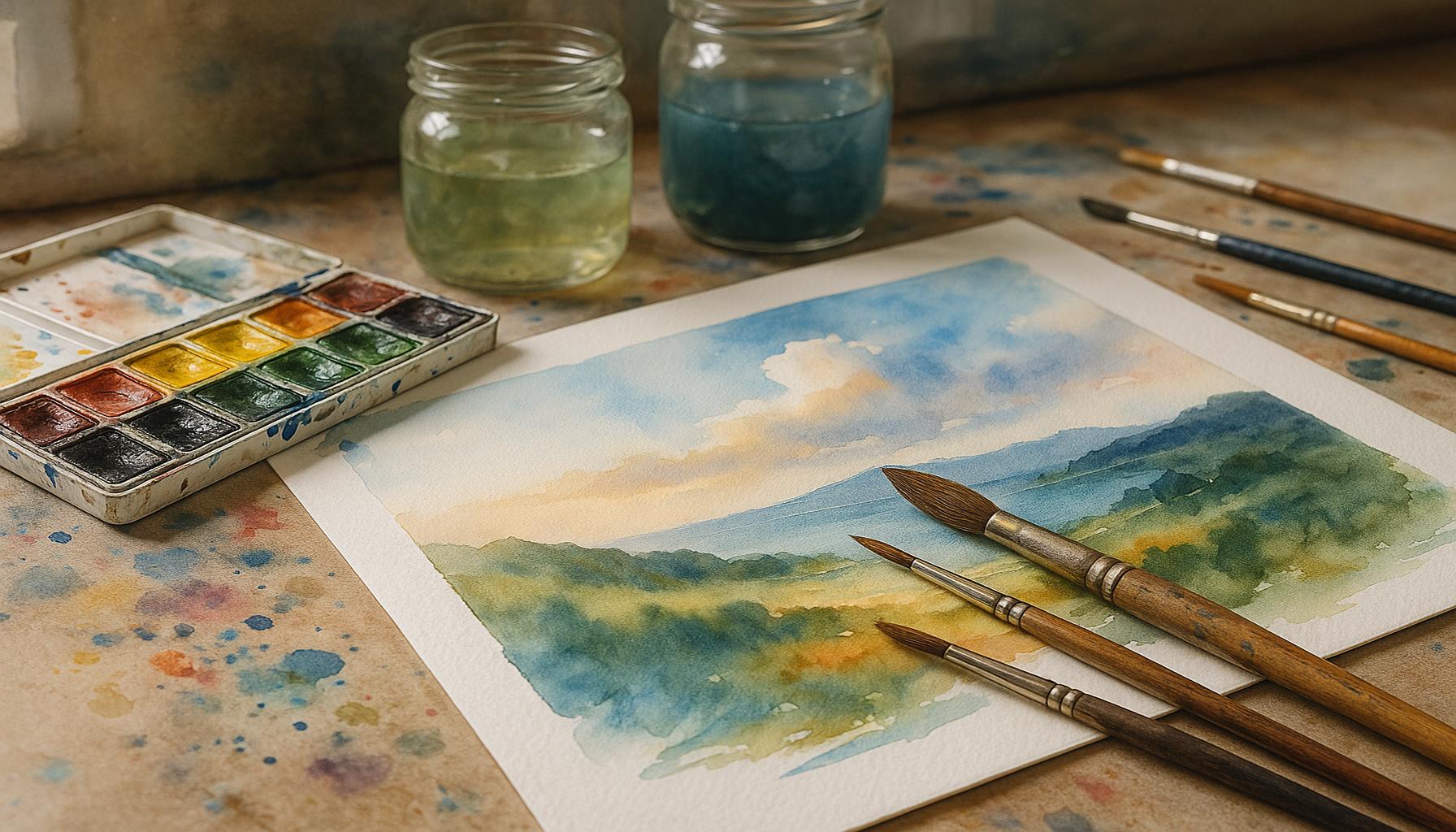The Evolution of Digital Art: Exploring New Creative Frontiers
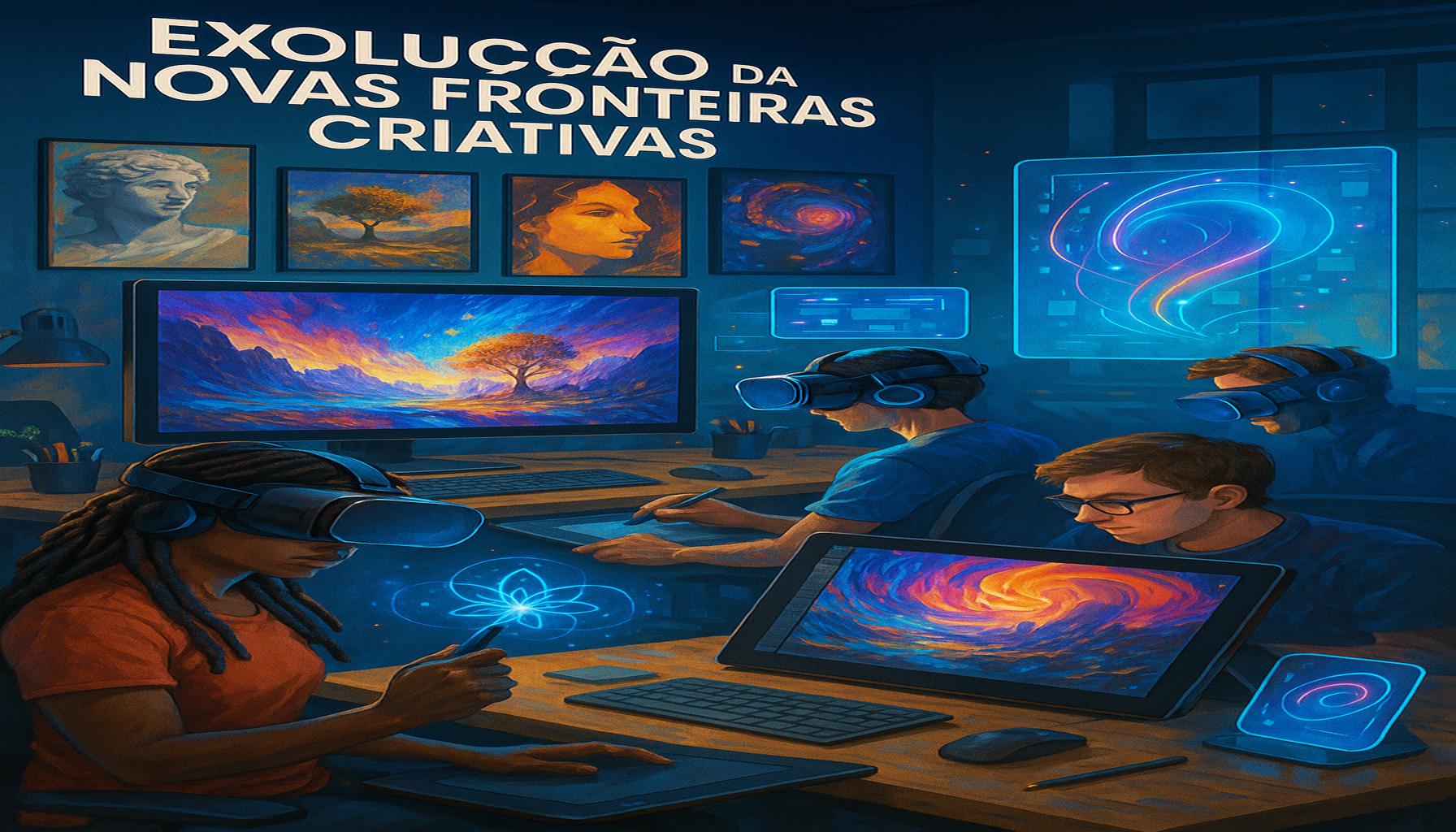
Transformation of Digital Art
The world of digital art has experienced a remarkable transformation over the past few decades. From its inception in the late 20th century to its current state as a compelling medium, this unique form of expression continually pushes creative boundaries. Today, artists have access to an array of tools that redefine how they bring their visions to life, showcasing their work in innovative ways.
Technological Advancements
The evolution of software and hardware has fundamentally revolutionized the way artists create. Tools like Adobe Creative Cloud and Procreate empower digital creators to produce intricate designs with precision. For instance, Adobe Photoshop functions as a cornerstone for many graphic designers, enabling everything from photo manipulation to intricate digital painting. Meanwhile, Procreate has gained immense popularity among illustrators for its user-friendly interface, providing an outlet for creativity directly from iPads. Furthermore, advancements in computer hardware, such as high-resolution tablets and powerful graphical processors, have enhanced the digital art experience, allowing for smoother workflows and more elaborate creations.
Access to Platforms
Online platforms have also transformed the way artists share their work. Websites like Instagram and DeviantArt provide opportunities for artists to showcase their portfolios to a global audience. This exposure can lead to significant career advancements, as artists connect directly with potential clients and collaborators from around the world. For example, many artists have leveraged Instagram’s visual-first format to build their brands and gain followers, turning their passion into a profitable full-time career. This level of accessibility not only democratizes the art world but also fosters diverse communities where artists can share techniques, critiques, and support.
Emerging Technologies
Moreover, emerging technologies like Virtual Reality (VR) and Augmented Reality (AR) are reshaping the artistic landscape. These cutting-edge technologies enable immersive experiences that engage viewers in ways traditional art forms cannot. For instance, VR art installations allow individuals to step into fully virtual worlds constructed by artists, experiencing their visions firsthand. Notably, projects like The Night Cafe, a VR adaptation of Vincent van Gogh’s iconic painting, illustrate how digital art can transport viewers into the imaginative realms of artists, offering an experiential layer that changes the way we interact with art.
Monetization of Digital Art
The rise of cryptocurrency and non-fungible tokens (NFTs) has introduced new avenues for artists to monetize their work, making digital art not just a creative outlet but also a potential source of income. NFTs allow artists to sell their work as unique digital assets, providing proof of ownership and scarcity in a world where digital replication is effortless. This new economic model invites discussions about art ownership and valuation in the digital age. High-profile sales, such as Beeple’s digital artwork selling for $69 million at Christie’s auction house in March 2021, highlight the immense potential of digital art in contemporary markets.
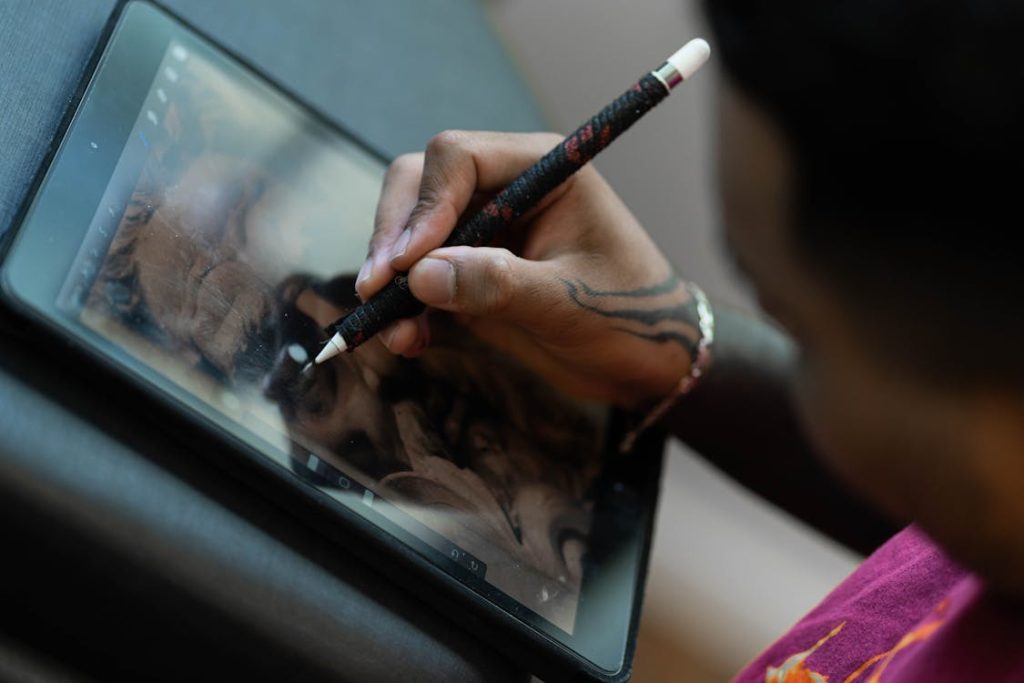
As digital art continues to evolve, it challenges traditional boundaries and embraces innovation. This exploration of new creative frontiers is not merely a trend; it represents a cultural shift. The transformation ignites conversations about the future and potential of art and invites audiences to reflect on their engagement with creativity. Join us as we delve deeper into the fascinating journey of digital art and its future possibilities, revealing a world enriched by technology and imagination.
DIVE DEEPER: Click here to uncover more insights
Revolutionizing Creative Expression
The digital art landscape continues to evolve at a dizzying pace, reflecting not only shifts in technology but also cultural dynamics. As artists increasingly embrace digital mediums, their creative expression undergoes profound transformation. Unlike traditional art forms tied to physical materials, digital art offers limitless possibilities, enabling artists to experiment and adapt with ease. With just a few clicks, they can explore diverse styles, merge genres, and utilize techniques that were once impossible.
Collaboration Across Disciplines
One of the most significant developments in the realm of digital art is the increasing collaboration between artists from various disciplines. Graphic designers, photographers, animators, and even musicians are joining forces, fostering a cross-pollination of ideas that enhances the creative process. Collaborative projects often lead to unexpected results that challenge artistic conventions.
- Motion Graphic Art: This type of art blends animation and graphic design, creating dynamic visuals that tell compelling stories.
- Interactive Installations: Artists are creating works that invite viewer participation, merging digital interfaces with tactile experiences.
- Multimedia Performances: By incorporating visuals, sound, and even live interaction, artists create rich, immersive experiences.
As these collaborative efforts thrive, they not only broaden the artistic narrative but also create new audiences that appreciate the multifaceted nature of digital art. Art festivals like the South by Southwest (SXSW) in Texas or the Digital Arts Festival in New York City showcase this interdisciplinary approach, drawing attention to innovative artworks that blur the lines between categories.
Impact of Social Media and Online Communities
The power of social media cannot be overstated when discussing the evolution of digital art. Platforms like TikTok and <strong.Pinterest have emerged as vibrant ecosystems for artistic expression, enabling creators to share their processes and connect with audiences instantaneously. Viral trends often propel lesser-known artists into the spotlight, making it easier for them to establish a following. This democratization allows for a diverse range of voices to emerge, enriching the digital art community.
Additionally, online communities such as ArtStation and Behance serve as essential platforms for artists to showcase their portfolios. These sites encourage feedback and critiques among peers, fostering an environment where continuous learning takes place. Artists are no longer limited by geographical boundaries; they can gain visibility and engage with art enthusiasts from diverse backgrounds, ultimately leading to a more enriched artistic dialogue.
Challenges and Opportunities
Despite the tremendous opportunities available in the digital art space, challenges persist. Issues surrounding copyright, unintended plagiarism, and the commodification of creativity have emerged, compelling artists to navigate a complex landscape. Nevertheless, these challenges also invite innovation, pushing artists to find unique solutions to protect their work. The necessity for art education has never been more relevant, emphasizing digital literacy and ethical considerations within the artistic community.
As the landscape of digital art continues to shift, artists will undoubtedly face new challenges that will require them to adapt. However, the potential for limitless creativity and expression remains a compelling force, propelling the evolution of digital art into uncharted territories. It is a vibrant sphere, alive with energy, curiosity, and above all, endless possibilities.
The Transformation of Creative Processes
The evolution of digital art has fundamentally transformed the creative processes for artists across the globe. With tools like digital canvases and sophisticated software, artists are now able to experiment with varied textures and color schemes, pushing the boundaries of traditional craftsmanship.
Impact of Technology on Artistic Expression
Advanced technologies such as artificial intelligence and virtual reality are paving new paths in the realm of digital art, allowing artists to engage with audiences in groundbreaking ways. For example, AI algorithms can create unique pieces of art by learning from existing works, leading to a fascinating collaboration between human creativity and machine learning. This synergy not only enhances aesthetic appeal but also raises intriguing questions about authorship and originality in the digital era.
Access and Community Building
The digital landscape fosters a sense of community among artists and enthusiasts, facilitating collaboration and knowledge-sharing like never before. Online platforms serve as virtual galleries, showcasing evolving forms of art and allowing artists to reach global audiences. This democratization of art means that emerging artists have the opportunity to gain recognition without the barriers often present in traditional art spaces.
Table of Advantages
| Category | Details |
|---|---|
| Creativity Unleashed | Artists can explore innovative forms and techniques that were previously unimaginable. |
| Global Reach | Digital art enables artists to share their work with a worldwide audience instantly. |
As we navigate through this new creative frontier, it’s clear that digital art will continue to be a dominant force, offering artists infinite possibilities for expression and innovation. This fascinating realm invites both creators and spectators to participate in a continuously evolving dialogue about art and technology.
DIVE DEEPER: Click here to discover the evolution of digital art
Technological Advancements Shaping Digital Art
As the digital art landscape expands, the rapid evolution of technology plays a crucial role in shaping how artists create and share their work. Advancements in software capabilities, hardware performance, and emerging technologies are redefining the artistic process and expanding the toolkits available to creators. The introduction of cutting-edge tools has enabled artists to elevate their work from 2D compositions to immersive 3D experiences, essentially creating new realms of expression.
The Role of Artificial Intelligence
One of the most exciting technological developments influencing the evolution of digital art is the rise of artificial intelligence (AI). AI-powered tools are becoming invaluable partners for artists, augmenting creativity and expanding the boundaries of traditional art. Applications like DALL-E and Midjourney not only generate images based on text inputs but also offer new perspectives on the creation process.
These AI tools are not intended to replace human creativity; rather, they foster collaboration, producing novel artworks that blend human intent with machine learning algorithms. Moreover, their impact on the industry has led to the emergence of AI-generated art exhibitions, sparking debates about authorship, originality, and the essence of creativity itself. Institutions like the MoMA and the Whitney Museum have already begun to showcase AI works, reflecting an ongoing shift in how the art world perceives and evaluates creative outputs.
Virtual Reality and Augmented Reality
Another pivotal area in the digital art evolution is the integration of virtual reality (VR) and augmented reality (AR). These immersive technologies offer artists new ways to engage audiences, transforming the viewing experience from passive observation into active participation. VR artworks invite viewers to step into entirely new worlds, enabling them to experience art in a multi-sensory manner.
Notable examples include the immersive art experiences offered by teamLab Borderless in Tokyo, where digital art installations use projection mapping to create breathtaking environments that change continuously. Similarly, AR applications like Snapchat’s Lens Studio allow artists to create interactive art pieces that can be viewed and interacted with through smartphones, bridging the gap between the digital world and physical reality.
The Influence of Blockchain and NFTs
As the digital art scene flourishes, the rise of blockchain technology and non-fungible tokens (NFTs) generates significant attention and investment. NFTs provide a framework for artists to establish provenance and ownership in the digital realm, allowing them to sell their work directly to collectors and bypass traditional gallery systems. This move toward decentralization not only empowers artists financially but also encourages unique forms of self-expression.
Art fairs such as Art Basel have begun to incorporate NFT exhibitions, validating the growing intersection of technology and traditional art markets. Prominent figures like Beeple have made headlines with record sales, bringing NFT art into mainstream conversations and attracting new audiences eager to explore digital ownership.
Environmental Considerations in Digital Art
As the digital art community continues to expand, awareness of environmental considerations is becoming increasingly important. The carbon footprint associated with blockchain technology, especially in the context of NFTs, has raised discussions about the sustainability of digital art practices. Artists and technologists are actively seeking solutions, from utilizing eco-friendly platforms to advocating for changes in how digital currencies operate.
The evolution of digital art is not merely a reflection of technological progress; it intertwines with broader societal themes that engage artists and viewers alike. The future of this vibrant medium lies not only in its adaptability but also in its capacity for innovation and inclusivity, paving the way for a new chapter in the narrative of creative expression.
DISCOVER MORE: Click here to learn about the evolution of crafting
Conclusion: Embracing the Future of Digital Art
The evolution of digital art represents a transformative journey that merges creativity with groundbreaking technology. As we have explored, the infusion of artificial intelligence and the incorporation of virtual reality (VR) and augmented reality (AR) are not just enhancing artistic expression; they are redefining the very nature of art itself. Artists are harnessing these technologies to create captivating experiences that engage audiences in interactive and immersive ways, blurring the boundaries between creator and viewer.
Moreover, with the rise of blockchain technology and non-fungible tokens (NFTs), the digital art landscape is witnessing a revolution in ownership and authenticity, democratizing opportunities for artists while sparking discussions about intellectual property rights and what it means to be an artist in the digital age. Collectors are now able to invest in unique pieces that transcend traditional formats, embracing a culture of innovation that resonates through the global art market.
As we stand at the precipice of further advancements, it is crucial to consider the environmental implications of our digital practices. Artists and technologists alike are exploring sustainable solutions to ensure that the creative avenues we pursue do not come at the expense of our planet.
In conclusion, the future of digital art is vibrant and filled with possibilities. Its progression will undoubtedly continue to navigate captivating intersections of technology, creativity, and social consciousness. As artists push the edges of their mediums and engage with these pioneering tools, the art world invites continuing exploration and discovery, appealing to both seasoned enthusiasts and newcomers alike. The world of digital art awaits; will you immerse yourself in its new creative frontiers?

